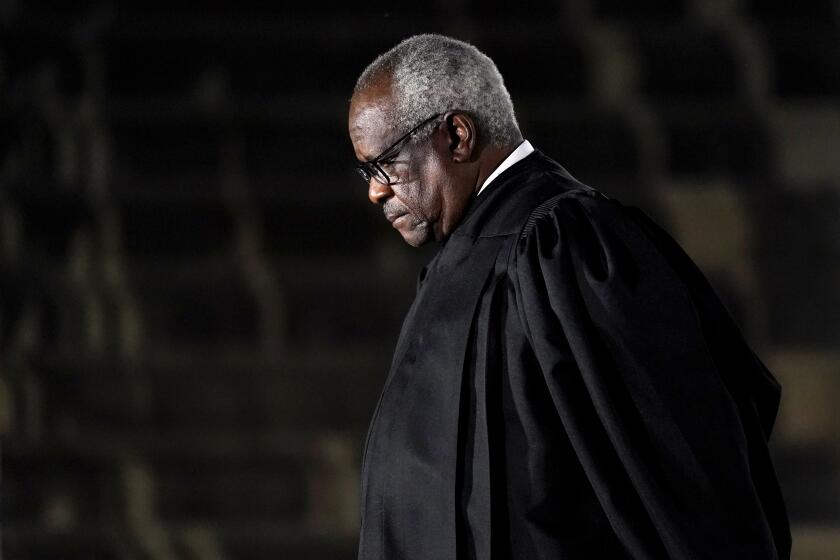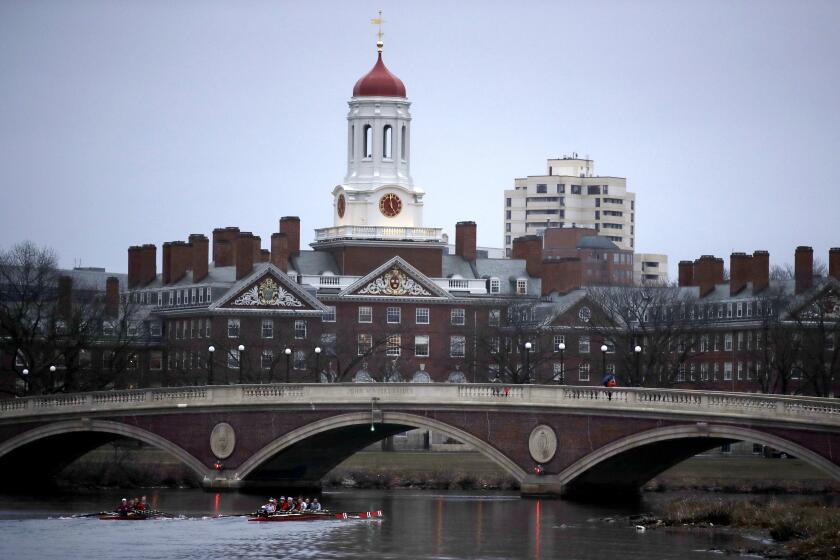Column: Taxpayer ‘protection’ or taxpayer ‘deception’? A new ballot measure aims to destroy state and local budgets

- Share via
It’s indisputable that the decline of state fiscal management in California began with the passage of Proposition 13 in 1978.
The tax-cutting initiative upended the tax structure that provided most of the revenues needed by localities and school districts, undermining the locals’ control of their own spending.
It was sold to voters as relief for beleaguered middle-class homeowners, but that was largely a scam: The chief beneficiaries have been the richest homeowners and commercial and industrial property owners, who have received billions of dollars in property tax breaks at the expense of residential owners.
These provisions discourage new government efforts no matter how urgent the problem to be addressed,...[and] hang like a shadow over budgets to be adopted in summer 2025.
— League of California Cities, et al
So it may be unsurprising that the heirs of Proposition 13’s proponents are trying to pull another fast one on California taxpayers.
Their tool, pushed chiefly by the California Business Roundtable, apartment developers and others of that ilk, is the so-called Taxpayer Protection and Government Accountability Act.
Get the latest from Michael Hiltzik
Commentary on economics and more from a Pulitzer Prize winner.
You may occasionally receive promotional content from the Los Angeles Times.
The Business Roundtable spent $6.375 million in 2022 pushing the initiative and an additional $770,000 last year; about $310,000 came in 2022 from the Howard Jarvis Taxpayers Assn., named after the chief promoter of Proposition 13, and about $400,000 last year from R.W. Selby & Co., a big apartment developer.
The initiative has been scheduled for the November ballot and will appear there unless the state Supreme Court throws it off; that’s what the measure’s critics have asked, citing numerous technical reasons.
The state’s political leadership is striking back in another way: through a public campaign targeting the Business Roundtable and its leading corporate members, and endorsed by Gov. Gavin Newsom, the Democratic legislative leaders, and organizations such as the League of California Cities, the Service Employees International Union, the California Medical Assn. and the California Teachers Assn.
Their strategem is to redefine the measure as the “Taxpayer Deception Act” and assert in public outreach that it would eliminate state funding for “paid family leave, disability insurance, gun violence prevention, and climate programs,” as well as funding for road and infrastructure maintenance.
Is this a fair assessment? It largely conforms to the judgment of the Legislative Analyst’s Office, which found that it would result in “lower annual state and local revenues, potentially substantially lower.”
Clarence Thomas needs rich friends because he can’t live on $285,000 a year. Too bad about the rest of us.
As is so often the case when the business lobby starts whining about its difficulties operating in the largest economy and most vigorous consumer market in the United States, “deception” is an understatement.
But let’s start with the text of the initiative itself. Fundamentally, it would change the rule for the enactment of a tax increase from current law, which requires a two-thirds vote of each legislative chamber or passage by a majority of voters, to two-thirds of each chamber and a majority of voters. Obviously this raises the bar significantly.
The initiative also would redefine numerous governmental fees as taxes subject to the new rule. Perhaps most damaging, it would retroactively invalidate any revenue measures passed since Jan. 1, 2022, unless they’re re-ratified in 2025.
Taken together, “these provisions discourage new government efforts no matter how urgent the problem to be addressed ... hang like a shadow over budgets to be adopted in summer 2025 ... and impair California governments’ ability to borrow,” a coalition of government advocacy organizations led by the League of California Cities told the state Supreme Court in a friend-of-the-court letter. The prospect of passage is “already undermining certainty and impairing planning in government finance,” they wrote.
The initiative backers are plainly intent on riding generalized discontent with taxes to victory. The text bristles with shibboleths of the anti-tax movement, for example by blaming higher taxes on “unelected bureaucrats, empowered by politicians and the courts.” It ties itself to Proposition 13 by stating that its purpose is “to further protect the existing constitutional limit on property taxes” — i.e., Proposition 13.
Let’s take a closer look at the promoters’ lead slogans. One is that the initiative “stops politicians from using ‘hidden taxes’ disguised as fees to drive up the cost of government services.” This absurdly turns reality on its head. Taxes don’t “drive up” the cost of services — they’re levied to pay for government services, almost all of which are favored by taxpayers, and the disappearance of many of which would elicit a taxpayer revolt.
The GOP’s far-right wing want to use a shutdown threat to take aim at school funding, children’s healthcare and food, housing and heating assistance. What’s to like?
Another slogan holds that Californians are struggling with the “highest income tax, state sales tax, gas taxes, and poverty rate.”
It’s true that California’s top marginal income tax rate is the highest in the nation. But one can hardly blame that on “unelected bureaucrats”: Voters specifically endorsed the current top rates at the ballot box in 2004, 2012 and 2016 — the last by a 63%-37% vote.
The truth, moreover, is that the vast majority of California taxpayers don’t pay anywhere near the top rate, according to the Institute on Taxation and Economic Policy. Who does? The special interests behind this initiative. The highest marginal rates, ranging from 10.3% to 13.3%, kick in for single filers with incomes over $350,000 and couples with incomes of nearly $700,000 and higher.
California’s income tax is steeply progressive, meaning those who earn the most pay disproportionately more. The lowest-income 20% of households, with incomes of less than $25,200, pay less than about 4% of family income in state income tax; the highest 1%, with earnings of $862,000 or more, pay nearly 9% of their earnings in income taxes.
If you’re wondering why executives sitting around the Business Roundtable might be agitating for lower taxes, there’s your answer.
It is true that the state sales tax rate of 7.5% is the highest in the nation. It’s also our most regressive tax, meaning it burdens lower-income Californians the most — costing the lowest-earning 20% an average 7.6% of family income. That burden drops steadily as income rises, reaching a mere 1% for the blessed top 1% of earners.
One might reasonably ask why the income and sales tax rates are so high in California. The answer is Proposition 13, which eviscerated the property tax that was once the most stable and productive revenue source for local government. With the passage of Proposition 13, the revenue-raising responsibilities devolved to the state, which had no option for covering local needs except through the income and sales tax.
It should come as no surprise that the tax initiative backers don’t mention the property tax in their spiel. The reason is that California’s effective average property tax rate ranks only 33rd among the states; Texas and Florida, which boast of imposing no income tax, are both higher (sixth and 26th, respectively, according to Census Bureau figures).
Hedge fund billionaire Ken Griffin made a $300-million gift to Harvard, his alma mater. It’s the kind of faux-generosity the ultra-rich rely on to avoid paying their fair share of taxes.
One other point bears mentioning, for perspective. It concerns who the beneficiaries are of these states’ tax structures. In Texas and Florida, it’s the rich. As a share of family income, the total tax burden in Texas falls heaviest on the lowest-income households — 12.8% of family income for those earning $21,700 or less — and lightest on the wealthiest — 4.6% of family income on the top 1%, earning $744,800 or more.
Florida looks the same: Households with earnings of $19,600 or less pay 13.2% of their income in state taxes, but the top 1%, earning $735,700 or more, fork over a mere 2.7% of their income in taxes.
California’s structure is much more equitable. All blocs in the income range, from the lowest 20% (less than $25,200) to the top 1% ($862,000 or more), shoulder burdens ranging from 10.3% to 12% of household income, counting all taxes.
Make no mistake: The promoters of the tax initiative want California to look more like Texas and Florida.
Gas taxes, which the initiative promoters also target, are a special case. It’s true that California’s gas tax is the highest in the country, at about 78 cents per gallon. But they also pay for benefits that most Californians would probably regret losing, including clean air, clean gas technology and road and bridge maintenance.
Also, a sizable contributor to the price Californians pay for gas is what Severin Borenstein of UC Berkeley has identified as the “mystery surcharge.” That’s a difference in gasoline prices, currently more than 40 cents per gallon extracted by oil producers, refiners or retailers at an unidentifiable point of the gasoline economy.
Borenstein originally traced the surcharge to a price spike after an explosion at Exxon Mobil’s Torrance refinery in 2015 that led to a more than year-long shutdown — but the spike never disappeared after the refinery came back online.
The Wall Street Journal says America ‘soaks the affluent.’ Try to hold back your tears.
We can set aside the poverty rate for two reasons: First, its relationship to taxes is dubious, since households in poverty generally pay the lowest taxes (other than sales taxes) in California’s progressive system.
Second, according to the Census Bureau, California’s official poverty rate ranks 22nd among all states as measured by the percentage of residents living below the official poverty line, far better than states such as Mississippi, Alabama, Arkansas and West Virginia.
California does lead the nation in a calculation known as the supplemental poverty measure, but tax rates play almost no role in that calculation, which is based on factors such as housing costs.
Where does that leave us?
Proposition 13 was the child of legislative failure. Homeowners in the 1970s faced ever-higher property tax assessments due to a sharp run-up in home values. The Legislature could have crafted any of a number of solutions to deal with the crisis, but didn’t. The result was an outburst of voter fury at the ballot box in 1978, enacting the worst option of all.
Proposition 13 is what launched an era of government fees, for the simple if not obvious reason that the services and amenities California voters value have to be paid for somehow and Proposition 13 left few other options for doing so.
If California homeowners are struggling, one reason is that Proposition 13 shifted the burden of property taxes onto them: In 1975, single-family residences accounted for 39.9% of assessed values in Los Angeles County, and commercial-industrial properties for 46.6%. By 2018, the ratio had more than reversed, with houses accounting for 57.6% and commercial-industrial properties for 28.9%.
The “Taxpayer Protection Act” will make things worse. California voters will still want their services and amenities, but funding them will be much harder, so they’ll deteriorate. Voters will get angrier, but where will they turn and who will they blame?
The enduring rule of ballot measures applies here: If you want to know who will benefit from an initiative, just look who’s putting up the cash for it, and vote accordingly. The backers of the initiative say it’s “simple,” which is the clearest sign of all that it’s anything but.
More to Read
Get the latest from Michael Hiltzik
Commentary on economics and more from a Pulitzer Prize winner.
You may occasionally receive promotional content from the Los Angeles Times.















